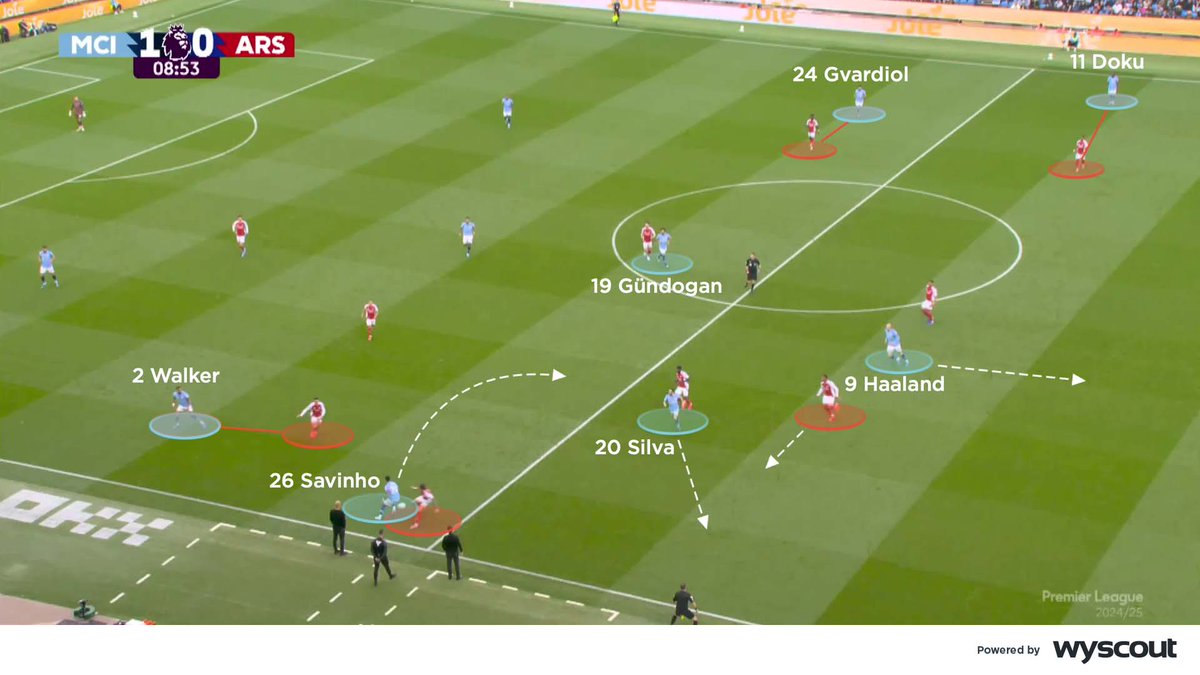Fresh analysis thread 🙌
Liverpool moved five points clear at the top of Group B to edge closer to qualification to the knockout stages of the Champions League... 🧐🧵
🔋@Wyscout
#LFC • #UCL
Liverpool moved five points clear at the top of Group B to edge closer to qualification to the knockout stages of the Champions League... 🧐🧵
🔋@Wyscout
#LFC • #UCL
Diego Simeone organised his team into an adventurous 3-5-2 formation in which their width was provided by their wing-backs Kieran Trippier and Yannick Carrasco, and Thomas Lemar and Rodrigo de Paul provided support ahead of Koke, their defensive midfielder... 🧐🧵 

On the occasions Atlético could switch play from the right and around Liverpool’s 4-3-3 with sufficient speed they succeeded in finding Félix in the inside channel, where his ability to spin and combine in limited spaces helped move possession back into midfield 🧐🧵 

Atlético prioritised attacking on the counter after Griezmann’s dismissal. Carrasco represented a key outlet on the left, where he also eased the pressure they were under, and was supported by Félix and their three central midfielders 🧐🧵 

Atlético prioritised attacking down the left on the rarer occasions they had spells of possession during the second half. Lemar drifted from central midfield to where Carrasco remained advanced – Trippier was consistently more withdrawn on the right... 🧐🧵 

When Roberto Firmino withdrew into midfield to alongside James Milner and Keïta, Jordan Henderson withdrew into deeper territory at the base of midfield, in turn encouraging Trent Alexander-Arnold and Andy Robertson to advance from full-back... 🧐🧵 

One-twos often succeeded in drawing an opposing midfielder out of position, in turn creating space in the centre. By combining with a wide forward moving infield, a full-back or central midfielder proved capable of receiving between the lines and creating increased space... 🧐🧵 

• • •
Missing some Tweet in this thread? You can try to
force a refresh
















